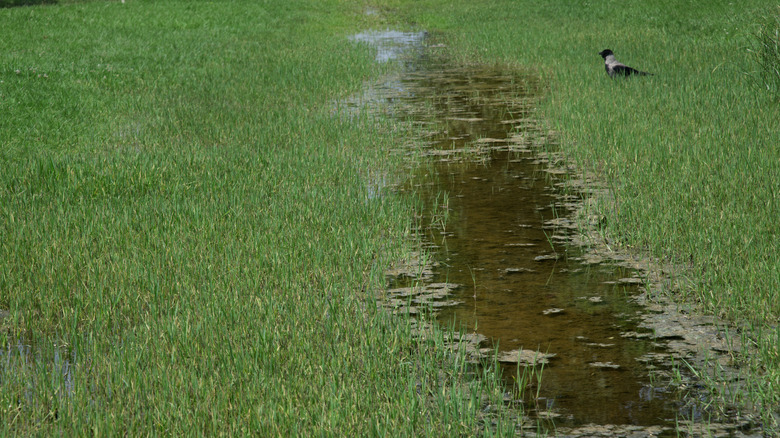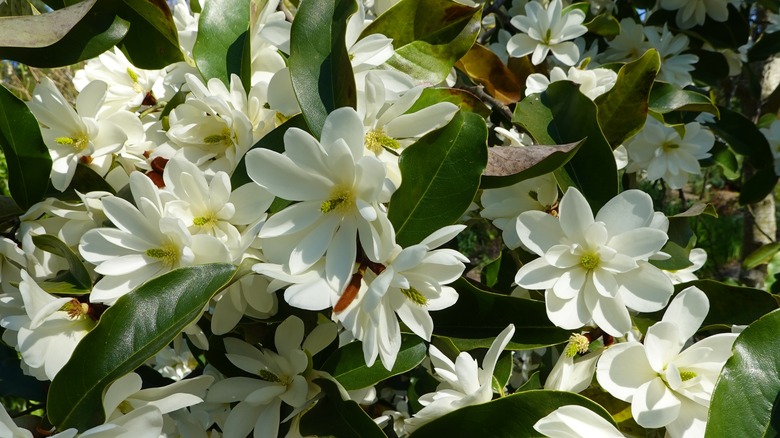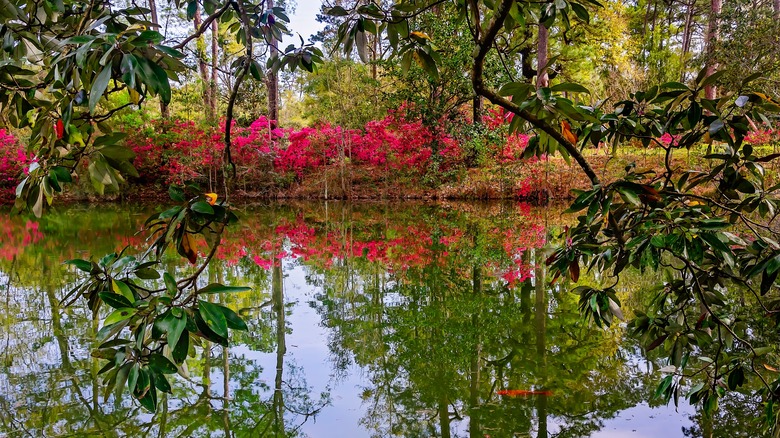The Beautiful Flowering Tree That Loves Damp Soil And Won't Take Over Your Yard
Adding some color and interest to your backyard can be a little challenging, especially for smaller areas. Many trees grow too slowly and require very specific conditions, and some can get too big for smaller yards. If you've got consistently damp soil in your yard, it's usually a challenge and necessitates the need to find ways to improve the wetness. Choosing the right type of tree to plant in your damp landscape can help eliminate potentially soggy areas and soak up excess water. While there are a few types of trees that love moist soil, they can usually take over your yard.
The sweetbay magnolia (Magnolia virginiana), however, is one type of tree that prefers moist soil and won't take over your yard. With dreamy white flowers and bright red seeds, this tree is on the smaller side, only reaching 10 to 35 feet tall. It is a fast-growing tree that pollinators and birds can't get enough of, especially woodpeckers, cardinals, tanagers, finches, moths, and butterflies. Its lemon-scented flowers bring a fragrant, sweet aroma to any yard, perfect to admire during the summertime.
How big does a sweetbay magnolia tree get?
When you typically think of magnolia trees, you probably think of the massive trees native to the Southern United States. The southern magnolia, for instance, can grow 50 to 90 feet tall and can be just as wide. The sweetbay magnolia, on the other hand, grows an average of 30 to 50 feet tall and 20 to 30 feet wide, giving you all the enjoyment of a typical magnolia without the issue of size. The great thing about this smaller tree is that it's easier to manage and care for and can be planted almost anywhere.
Some cultivars of sweetbay magnolia are also considered evergreen. When planted in warm climates, the glossy dark green foliage stands steadfast, providing interest and a focal point year-round. However, in cooler climates where winter brings dropping temperatures and the threat of frost (such as USDA zones 6 and below,) the sweetbay magnolia may drop most of its leaves and reveal beautiful picturesque branches.
Where is the best place to plant a sweetbay magnolia?
Most magnolia trees survive best in zones 7 through 10. But this mighty variety can survive cooler climates, growing well in zones 5 through 9. While sweetbays can survive standing water and periodic flooding, these should not be the norm. Unlike other magnolia tree species, it prefers areas where most magnolias can't survive. It thrives in moist and wet soil that's acidic and organically rich, similar to its natural habitat, along water-logged woodlands and swamps.
Once you're ready to plant, you should know how to grow and care for magnolia trees. This magnolia does best in full sun to partial shade. While it's not going to get huge in size, you'll still want to plant it far enough away from your house so it has ample room to grow. They are excellent for mixing into a border or privacy screen or in groups to hide unsightly views. Additionally, once established, they are drought-tolerant and resistant to wind damage. Their compact stature, resilience to environmental conditions, elegant foliage, and romantic flowers make the sweetbay magnolia a great choice for many areas. This stunning blossoming tree thrives in damp soil and won't take over your yard.


